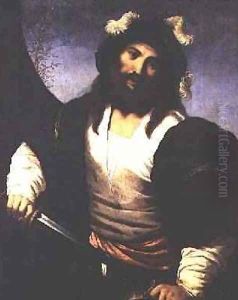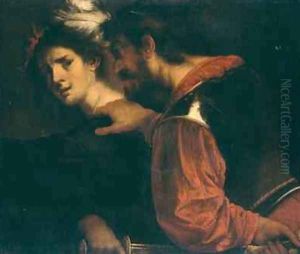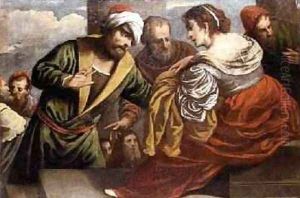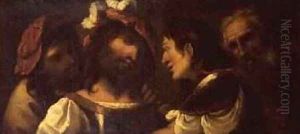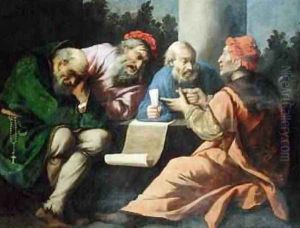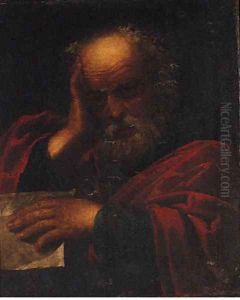Pietro the Elder Muttoni Paintings
Pietro Muttoni, more widely known by his nickname Pietro della Vecchia or Pietro the Elder, was an influential Italian painter of the Baroque period. Born in Vicenza in 1603, Muttoni moved to Venice at a young age, where he would spend the majority of his life and career. His work is characterized by a unique blend of the Venetian tradition with elements of Caravaggism, reflecting the dramatic use of light and shadow, as well as a keen interest in naturalistic details.
Muttoni's early career is somewhat obscure, but it is known that he was deeply influenced by the works of the great Venetian masters, including Titian and Giorgione, as well as the dramatic chiaroscuro of Caravaggio. His ability to adapt and merge these influences into his own style set him apart from his contemporaries. Throughout the 1620s and 1630s, Pietro della Vecchia became renowned for his religious and mythological scenes, which often featured a remarkable attention to human emotion and atmospheric effects.
In addition to his well-known religious and mythological works, Muttoni also gained recognition for his portraits and genre scenes, which showcased his versatility and deep understanding of human character. His work during this period demonstrates a shift towards a more softened use of light and a more intimate portrayal of subjects, reflecting the evolving tastes of the Baroque period.
Despite his success, Muttoni's work was sometimes criticized for its eclecticism and for the perceived inconsistency in quality. However, modern scholarship has reevaluated his contribution to the Venetian school, highlighting his innovative approach to composition and his influence on subsequent generations of artists. Pietro della Vecchia's legacy is preserved in many major museums around the world, attesting to his enduring impact on the history of art.
Pietro Muttoni passed away in Venice in 1678, leaving behind a rich body of work that continues to be studied and admired for its creativity and technical mastery. His career is a testament to the vibrant artistic culture of 17th-century Venice and his role as a bridge between the Renaissance and Baroque periods.
